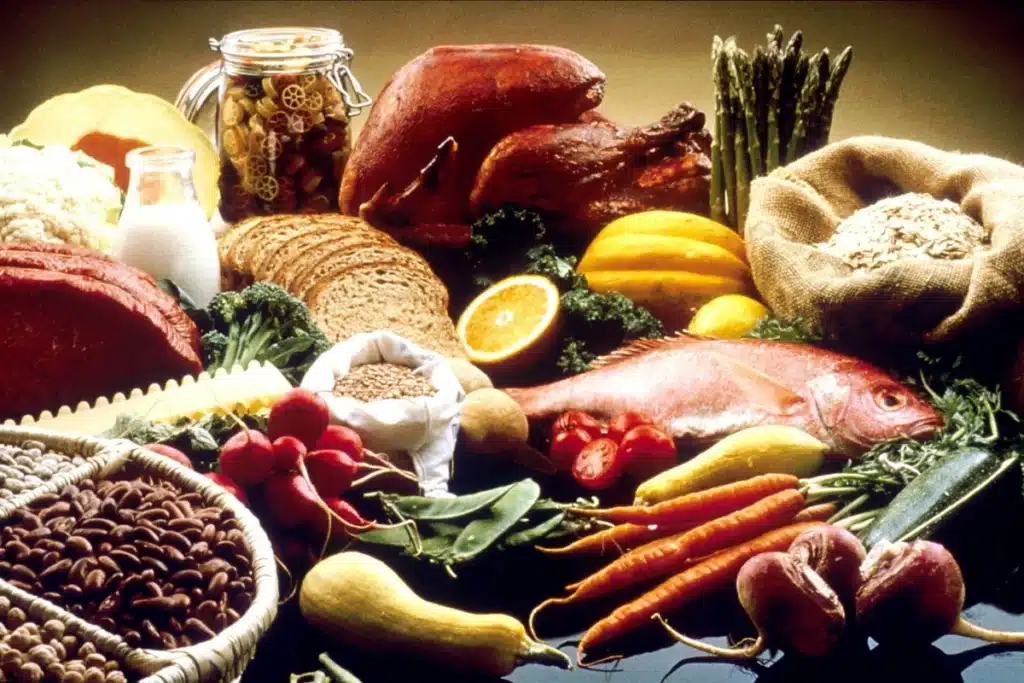In today’s world, where countless diets promise quick weight loss, it’s worth exploring the eating habits of ancient times. One fascinating period to examine is when Jesus Christ walked the Earth. By understanding the diet of that era, we can discover valuable lessons that can aid us in our modern-day quest for healthy weight loss.
The Diet of Jesus’ Time
During Jesus’ time, people followed a predominantly Mediterranean diet, which consisted of simple, whole foods. The diet primarily revolved around fresh fruits, vegetables, legumes, whole grains, lean proteins, and healthy fats. Here are key elements of that diet:
Plant-Based Foods
Fruits and vegetables held a central place in the diet, as they were readily available and provided essential vitamins, minerals, and fiber.
Whole Grains
Whole grains such as barley, wheat, millet, and oats were staples. These grains were often consumed in the form of whole bread or porridge, providing sustained energy and vital nutrients.
Legumes
Lentils, chickpeas, and beans were commonly consumed sources of protein, fiber, and vital micronutrients. They were also used in traditional stews and soups.
Lean Proteins
Fish, particularly in the regions near the Sea of Galilee, was a crucial source of protein and omega-3 fatty acids. Eggs and dairy, like yogurt and cheese, were consumed in moderation.
Healthy Fats
Olive oil was the primary source of fat and a popular addition to various dishes. It provided monounsaturated fats, antioxidants, and anti-inflammatory properties.
Limited Red Meat
While it was not completely excluded, red meat consumption was relatively low. Instead, individuals relied more on fish and poultry for their protein needs.
Benefits for Weight Loss Today
Adopting the diet of Jesus’ time for weight loss today can offer several benefits:
Nutrient Density
The diet was rich in essential nutrients, including vitamins, minerals, and antioxidants. It prioritized whole, unprocessed foods, which contributes to overall health and satiety, making it easier to manage portion sizes and calorie intake.
High in Fiber
The emphasis on fruits, vegetables, and whole grains ensured a high fiber intake. Fiber promotes digestion, regulates blood sugar levels, decreases hunger pangs, and aids in weight management.
Balanced Macronutrients
The diet incorporates a balanced intake of macronutrients, ensuring a steady supply of energy and reducing the likelihood of cravings or drastic blood sugar fluctuations.
Healthy Fats
The focus on olive oil and lean proteins such as fish provides heart-healthy fats and essential amino acids, supporting overall well-being.
Portion Control
The traditional eating habits of Jesus’ time were centered around moderation. This encourages mindful eating, preventing overeating and promoting a healthier relationship with food.
Sustainability
By embracing a diet based on whole, unprocessed foods, we can prioritize sustainability and reduce reliance on highly processed, calorie-dense foods that often contribute to weight gain.
Jesus Makes Healthier Eating Habits
Exploring the diet of Jesus’ time can be a remarkable journey towards adopting healthier eating habits and achieving sustainable weight loss. By incorporating more plant-based foods, whole grains, lean proteins, and healthy fats into our diets, we can take inspiration from the simplicity and wholesomeness of that era. Remember, consult with a healthcare professional or registered dietitian before making significant dietary changes to ensure they align with your individual needs and goals.
“Go, eat your food with gladness, and drink your wine with a joyful heart, for God has already approved what you do.” – Ecclesiastes 9:7
